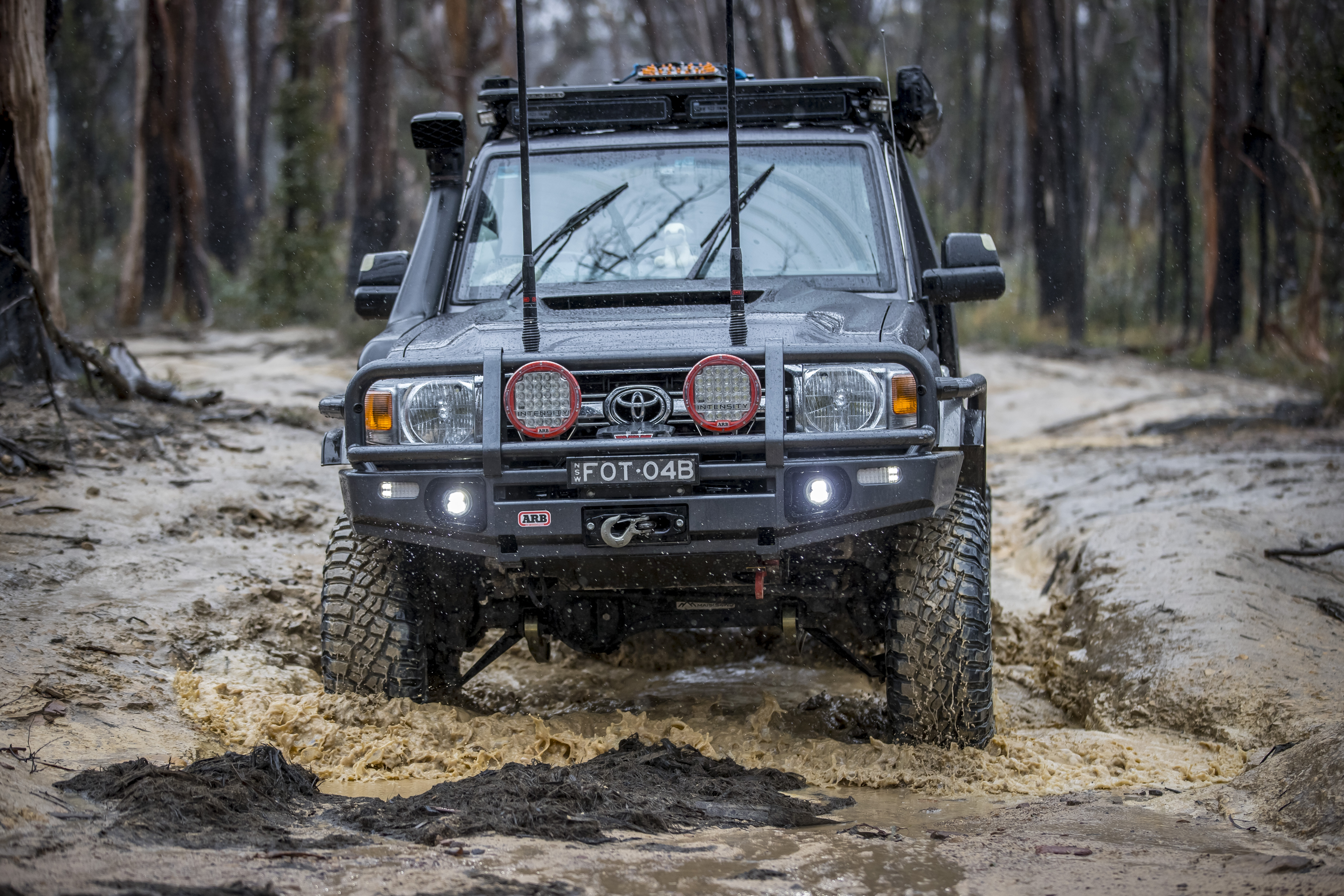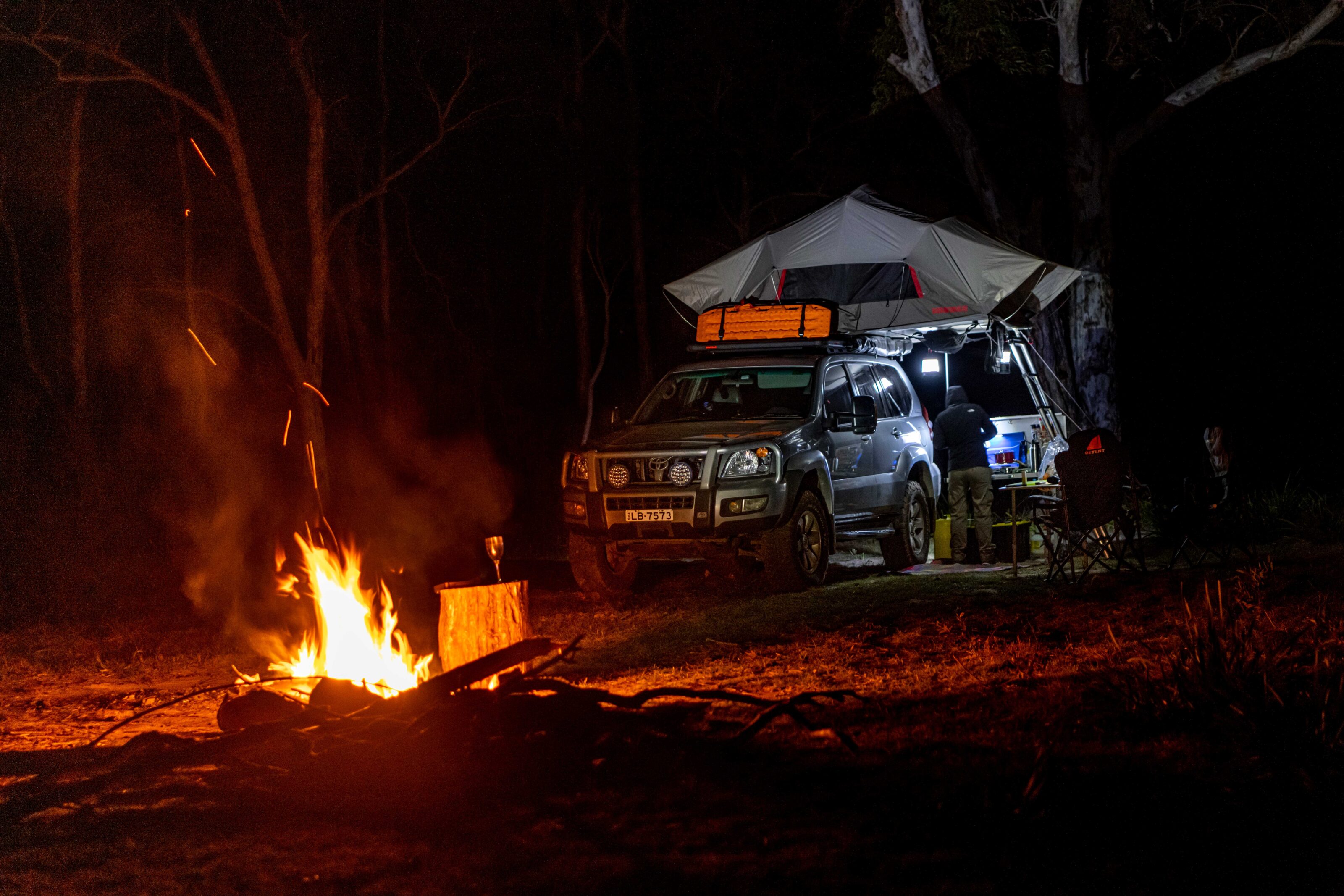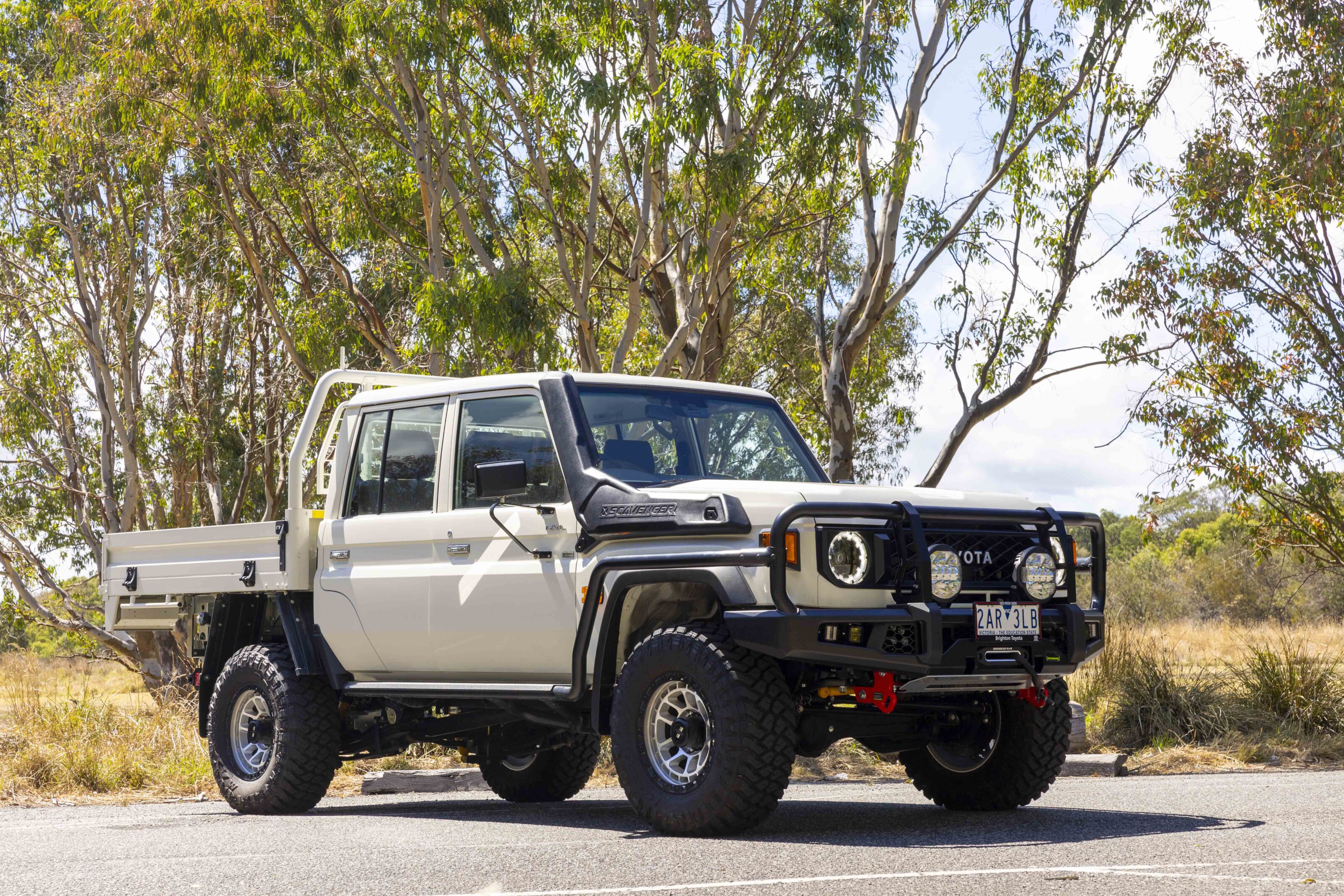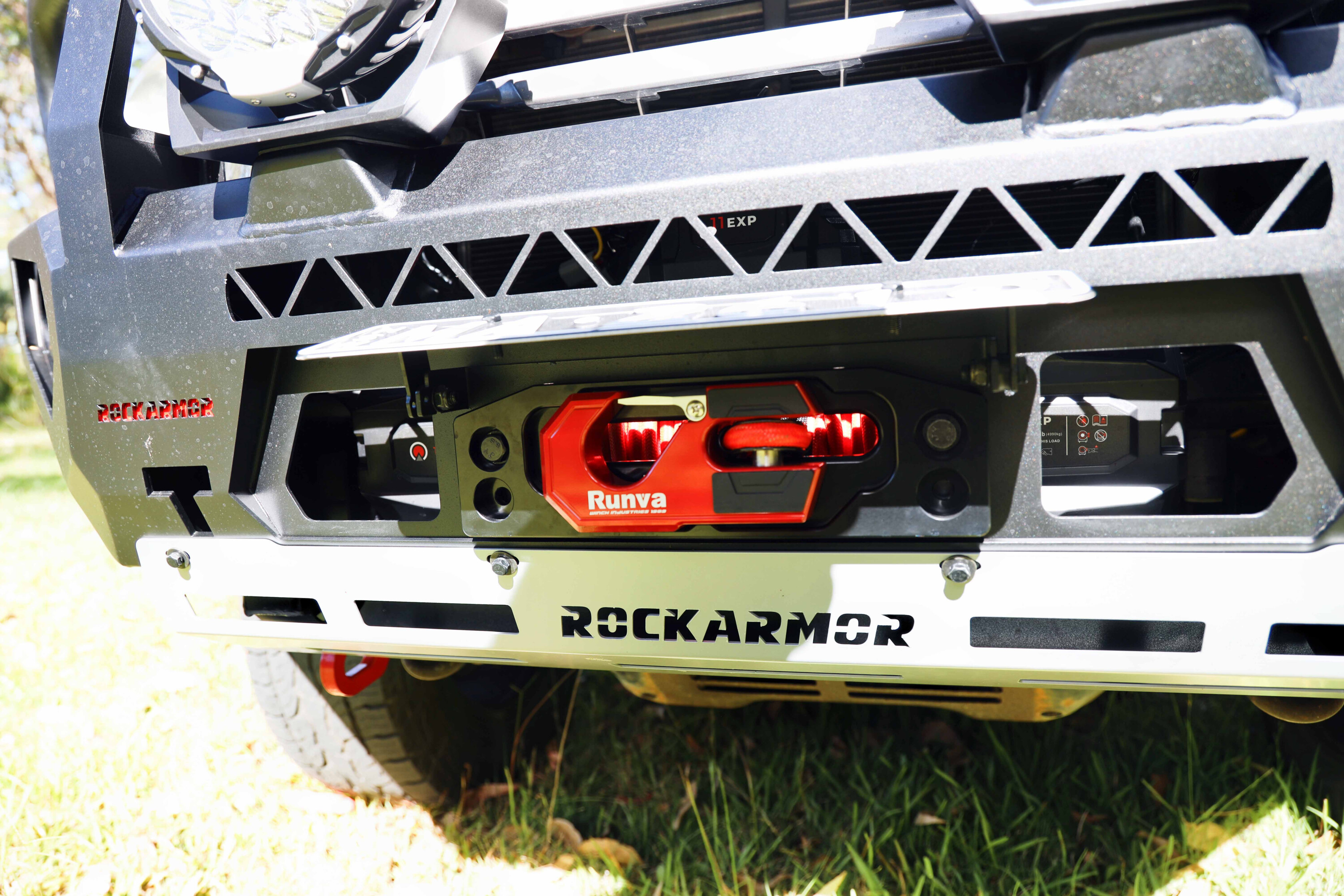Getting your 4×4 out of a stuck situation can be a time-consuming affair, especially when you’re travelling solo, but when you’re travelling with other vehicles, a quick snatch recovery can have you on the move again in a matter of minutes … so long as you’re carrying the right gear and you know what you’re doing.If you don’t know what you’re doing, snatch recoveries can be fraught with danger, but armed with some knowledge and the right equipment, it doesn’t have to be that way. After all, using one vehicle to pull another vehicle out of a stuck situation is about as straightforward as it gets when it comes to vehicle recovery.Here’s what you need to know …
Firstly, you’ll need an appropriate vehicle recovery strap, a method to safely attach the strap to both vehicles, and a way for the drivers of both the recovering vehicle and the stuck vehicle to communicate with each other.
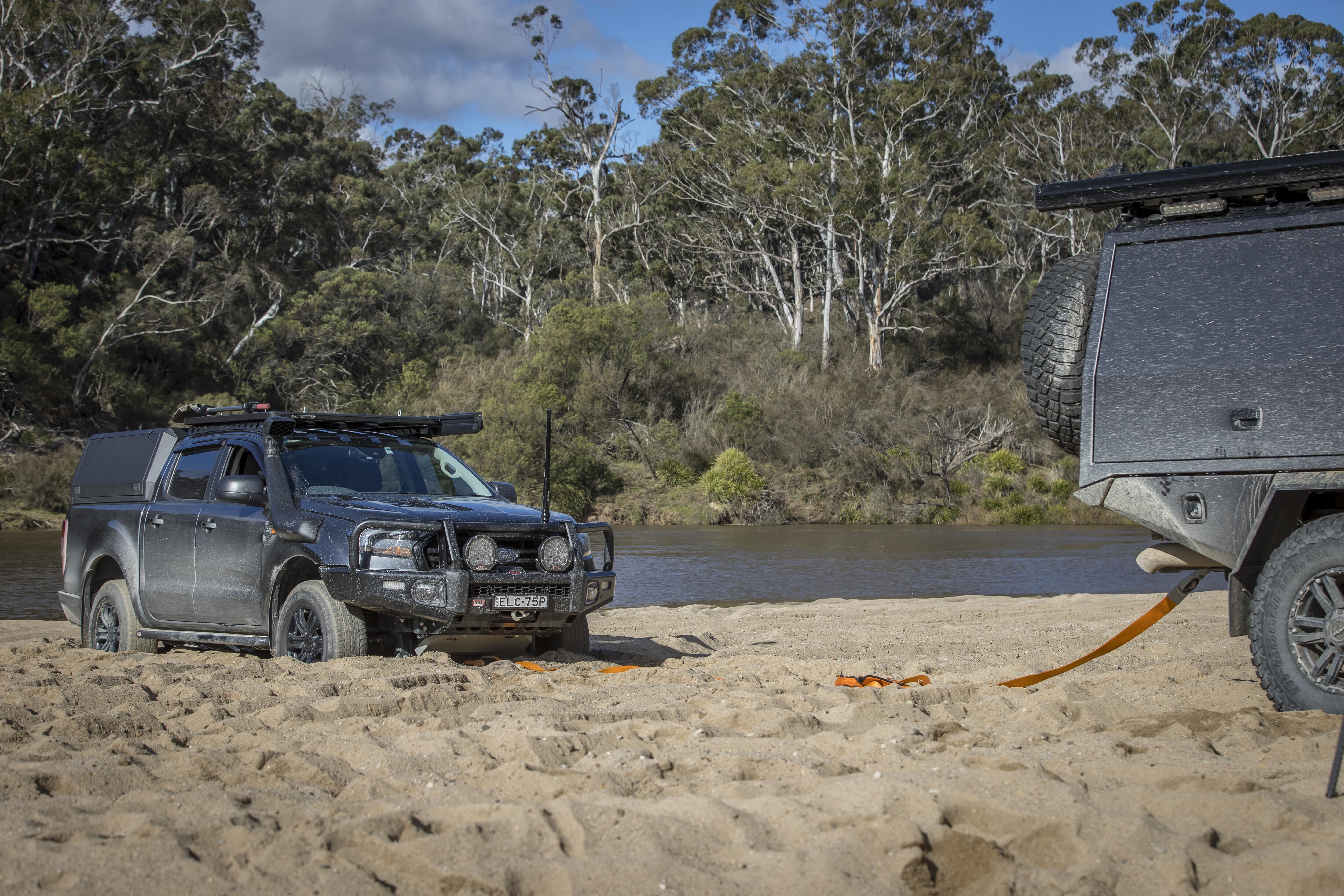
The two types of vehicle recovery straps, commonly called snatch straps or kinetic recovery ropes, look very different to each other, but they are essentially designed to perform the same task.
Just to confuse things however, snatch straps look a bit like tow straps and kinetic recovery ropes look a bit like tow ropes, but it’s important to note that vehicle recovery straps and tow straps/ropes are not designed to perform the same functions, and they are not interchangeable.Tow straps/ropes are designed to tow free-moving vehicles; they are not designed to recover vehicles that are stuck, although they can still be handy in a variety of off-road situations, such as helping to pull a vehicle up a steep hill or over an obstacle. But tow straps/ropes simply aren’t suited to pulling out a vehicle that’s bogged to its axles in mud or sand.
To avoid confusion, it is now mandatory for vehicle recovery straps to be clearly labelled. This is not always the case with tow straps and tow ropes.
Another way to make the distinction is that tow straps/ropes are often fitted with hooks or shackles at each end for easy vehicle attachment, while vehicle recovery straps are never fitted with hooks or shackles, but instead have a loop at each end for vehicle attachment.
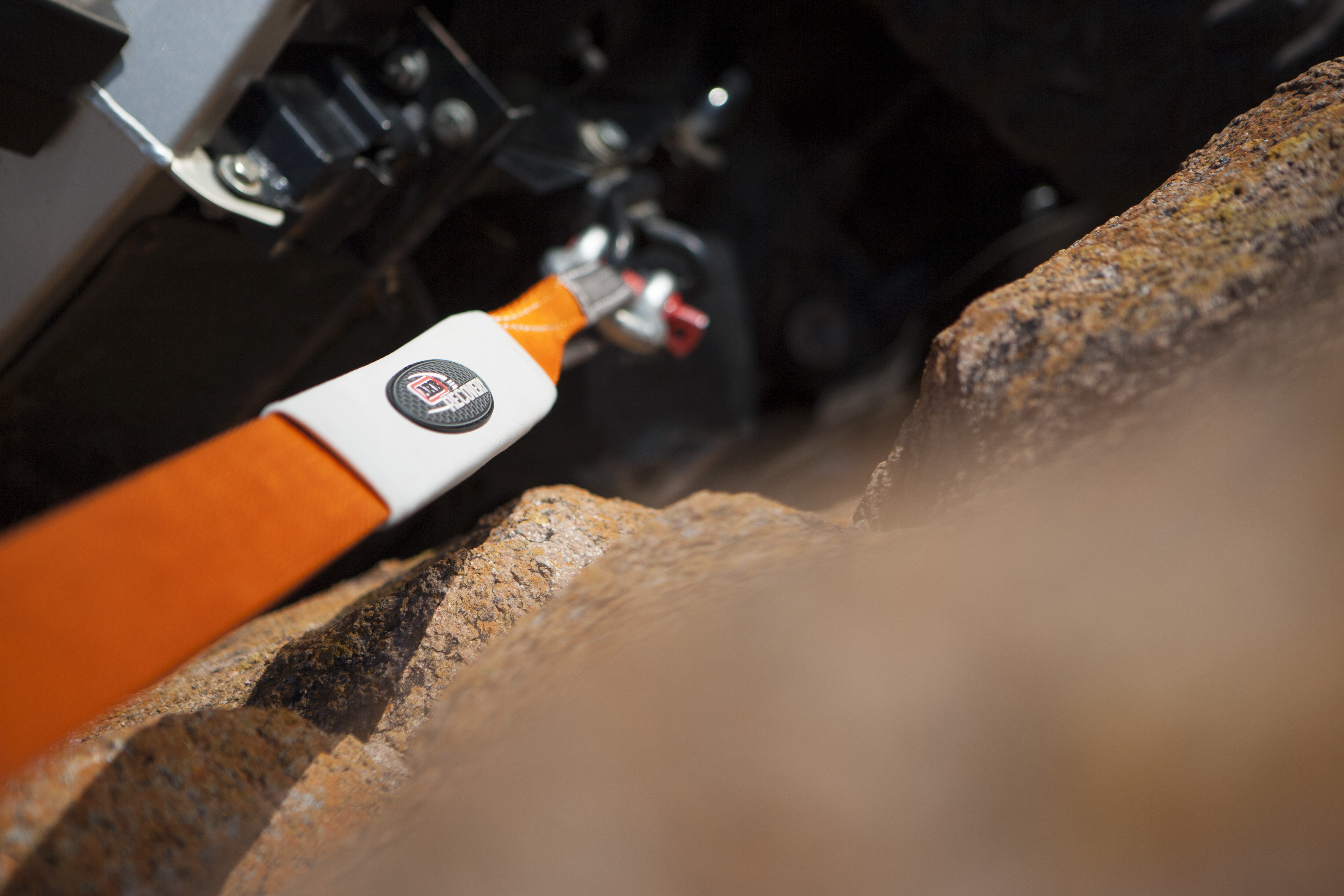
So how do they function differently? A tow strap/rope is not designed to stretch but a vehicle recovery strap is … and quite a lot; in the case of a snatch strap by around 20 per cent and of a kinetic recovery rope by around 30 per cent.
Snatch straps are made from flat nylon webbing and are most commonly available in six, nine and 12m lengths, and are between 60 and 100mm wide depending on the minimum breaking strength. For recreational four-wheel drive use, nine-metre straps with a minimum breaking strength rating of between 8000 and 11,000kg are common. When choosing the right snatch strap for the job, the minimum breaking strength should be between two- to three-times the Gross Vehicle Mass (GVM) of the lightest of the two vehicles involved in the recovery operation.
Snatch straps typically have reinforced eyes (or loops) at each end to allow fitment of shackles for vehicle attachment.Like snatch straps, kinetic recovery ropes are also manufactured from nylon, but in the form of a double-braided rope. The inner nylon core is the stretchy component, and this is protected by a braided nylon outer layer.
Kinetic recovery ropes also have eyes at each end, but they are spliced together rather than stitched. Some also feature a polyurethane (PU) coating on the eyes to minimise the occurrence of wear at this point where the rope is attached to the vehicle, either directly or by using a rated shackle.
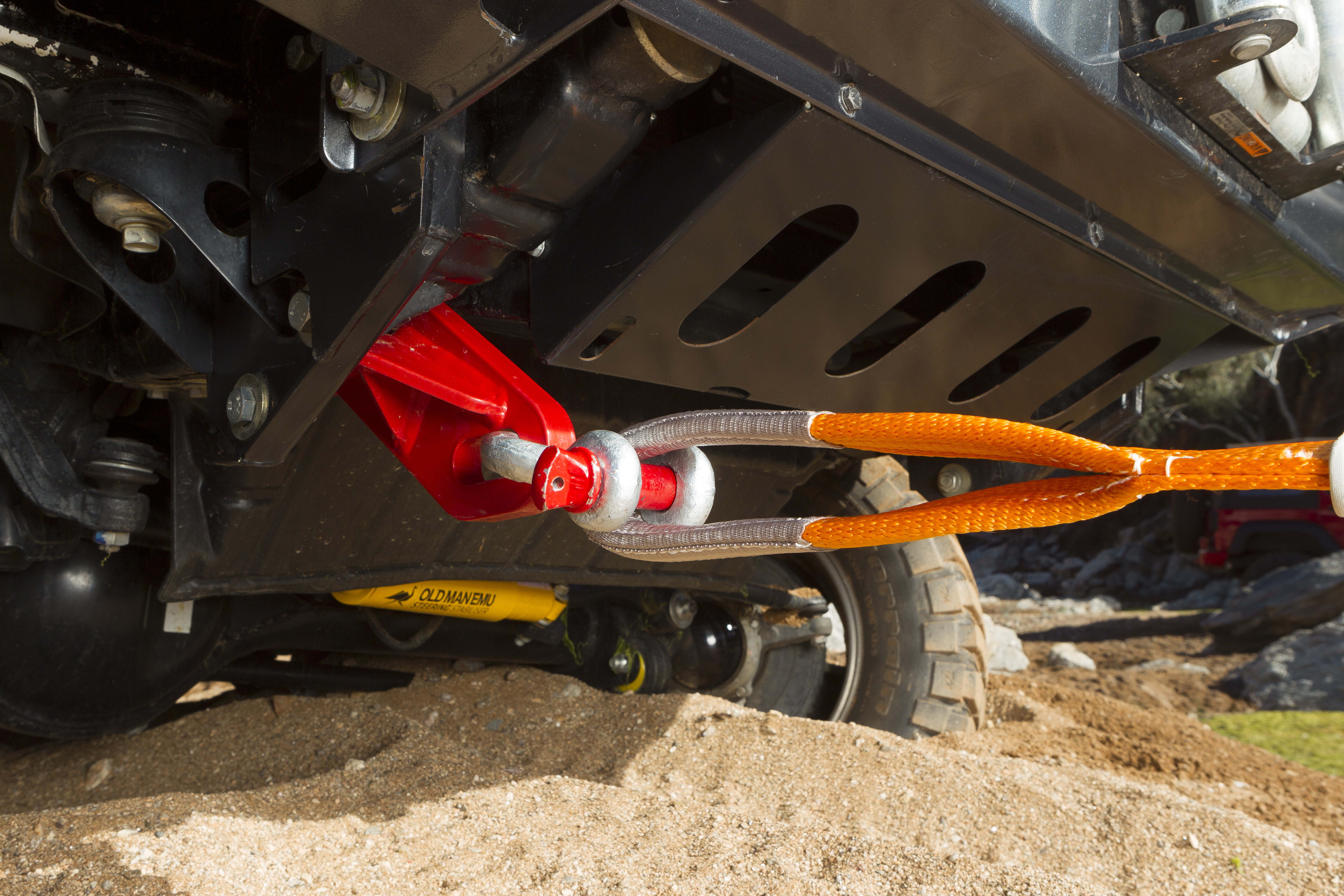
HOW DOES A RECOVERY STRAP WORK?
A vehicle recovery strap essentially acts like a big elastic band. Once attached to both vehicles, the recovery vehicle gets a run up and pulls on the strap, which stretches by about 20 to 30 per cent before it contracts. The stored kinetic energy in the strap is hopefully enough to ‘snatch’ the stuck vehicle out of its situation.
A snatch recovery can only be performed if there’s enough space available for the recovery vehicle to get a good run-up, and if the recovery can be performed by pulling the stuck vehicle forwards or backwards, not to the sides. If a snatch strap recovery does not suit the scenario, another recovery method will have to be employed, whether by simply using a shovel, a set of recovery tracks or a winch.
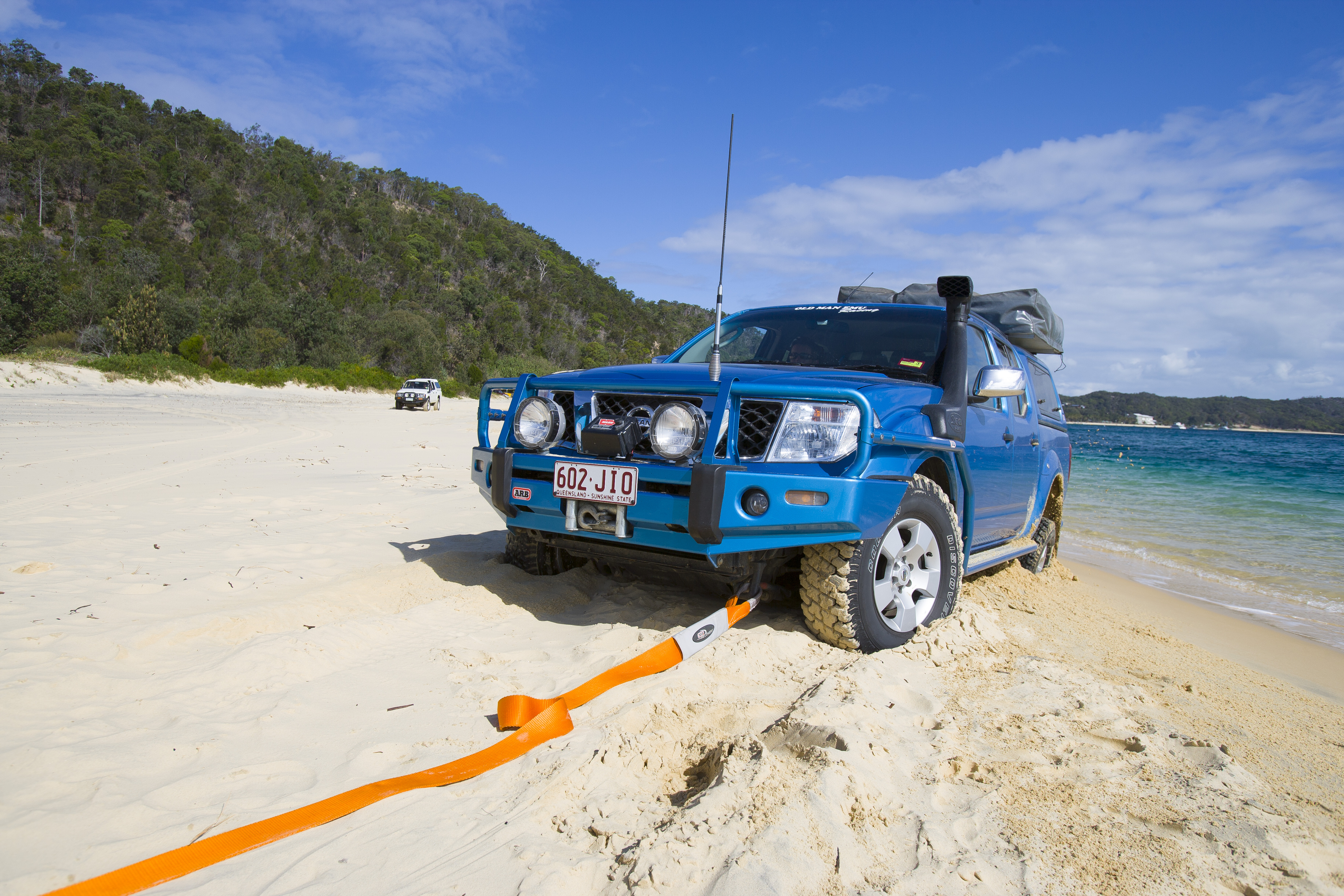
VEHICLE ATTACHMENT
Vehicle recovery straps should only be attached to a vehicle at rated recovery points, and these are not to be confused with vehicle tie-down points or shipping points, which are made from mild steel and will more than likely fail in a vehicle recovery situation. Likewise, never attach a vehicle recovery strap to a vehicle by looping it over a tow ball, as the tow ball could fail and become a lethal missile.If your vehicle is not equipped with factory rated recovery points, you can source aftermarket recovery points through various reputable 4×4 outlets, and these are affixed to your vehicle’s chassis with high-tensile bolts so you can perform safe snatch recoveries.
The eyes of a recovery strap can be attached to a vehicle’s rated recovery points by using rated bow shackles or soft shackles, the latter preferable in the event of an equipment failure.In the case of steel shackles, a stamped 3.25-tonne bow shackle is a high enough load rating for most snatch recoveries, and this size shackle is compatible with most of the rated recovery points fitted to recreational 4x4s.As well as being safer than steel shackles, soft shackles are lighter, more compact and they float, so if you drop it in a creek or at the beach you’ll likely be able to retrieve it. They are made from special synthetic ropes and feature a big knot at one end and a loop at the other; just feed one end through the eye of the recovery strap and the vehicle’s rated recovery point then feeds the knot through the loop.If a vehicle is fitted with two rated recovery points at the front, a bridle strap should be used to help spread the load evenly across the chassis of the vehicle. The pin of a square tow hitch can be used to connect a recovery strap at the rear of a vehicle, but bear in mind that in extreme circumstances the pin can bend and become difficult to remove; a better bet is to slide out the tow hitch and replace it with a dedicated recovery hitch to which a shackle (steel or soft) can be attached.
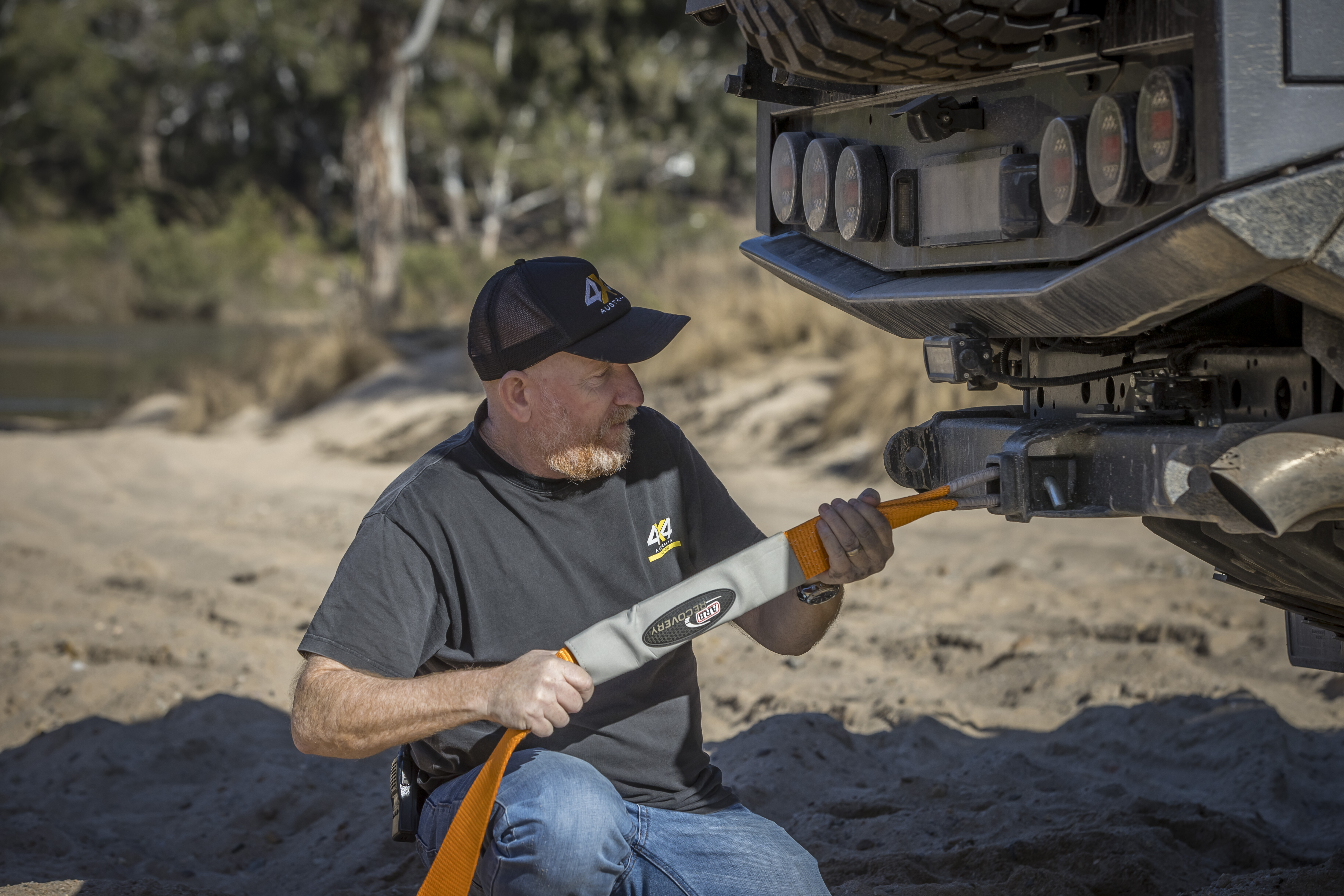
WHEN TO PERFORM A SNATCH RECOVERY
A snatch recovery should only be performed when you can safely get the recovery vehicle in range of the stuck vehicle. There is a method to connect two or more snatch straps together by looping them through each other, but never, ever try to joint two straps using a steel shackle.It’s also important to note that snatch recoveries should only be performed where there is enough space available to pull the stuck vehicle forwards or backwards; never to the sides. If there’s not enough space, or you can’t pull forwards or backwards, you’ll have to implement a different recovery method.
CLEAR COMMUNICATIONS
The only people involved in a snatch recovery should be the driver of the recovery vehicle and the driver of the stuck vehicle; bystanders should stand well clear of the recovery operation and preferably off to the sides.
The drivers should discuss how the operation will proceed and how they will communicate with each other. The best method of communication is via UHF radio. Before attempting the recovery, they should discuss their countdown procedure, how far they will pull the stuck vehicle, and how they will signal when to stop.
4WD TRAINING
The best way to learn how to safely perform any kind of vehicle recovery is by attending a nationally recognised training course, either operated by a private company or through an accredited 4×4 club.
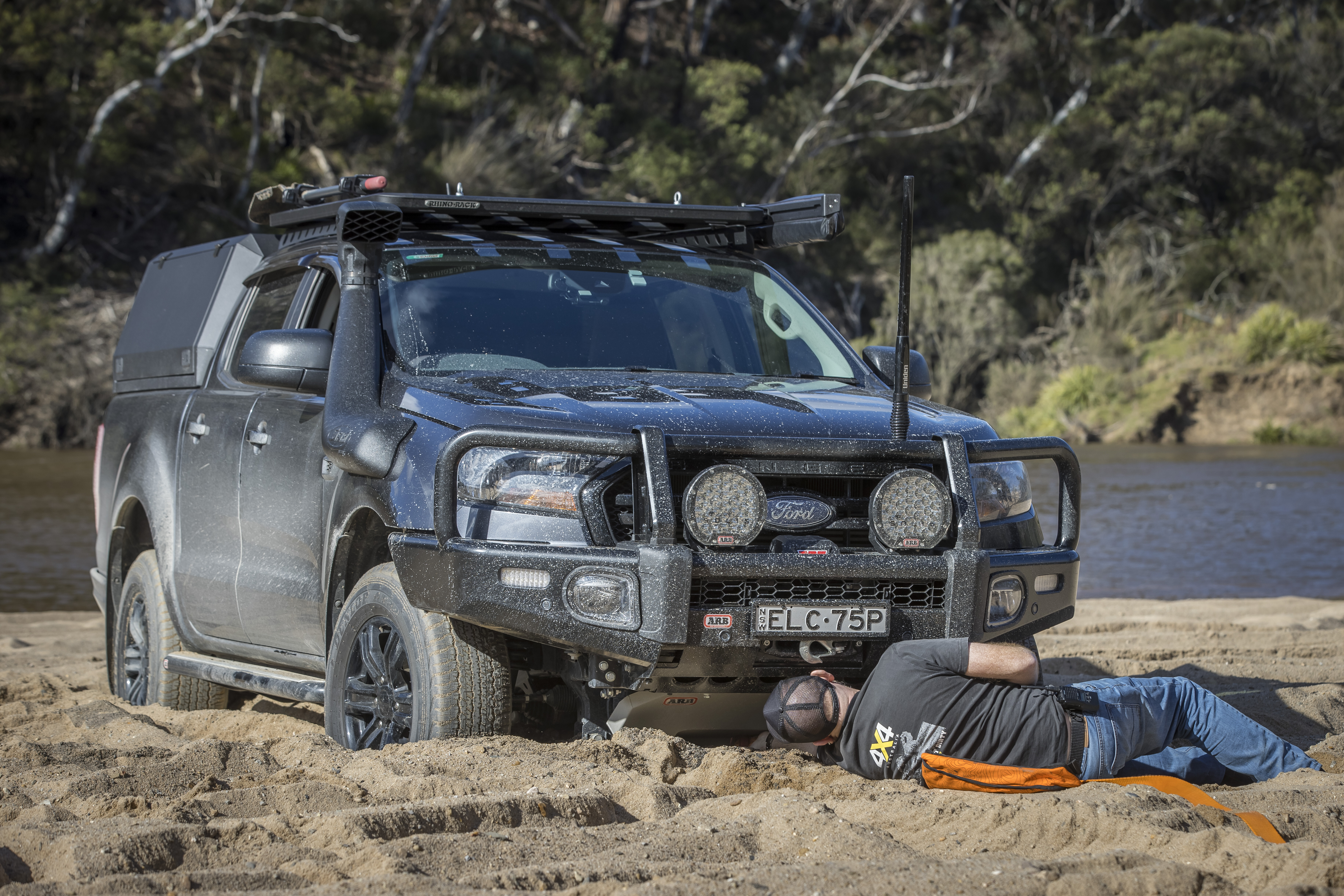
STEP-BY-STEP GUIDE
1. Line up the recovery vehicle in as straight a line as possible with the stuck vehicle. 2. If well and truly bogged in sand or mud, it will help to clear around the stuck vehicle with a shovel, including in front of the wheels and under the vehicle. 3. Unfurl the recovery strap and connect it to the rated recovery points on both vehicles using rated shackles, ensuring there is enough slack in the strap for the recovery vehicle to build up some momentum before the strap is pulled taut. 4. Place a weighted damper over the recovery strap in case there is an equipment failure. If the strap breaks this will hopefully prevent it from firing into one of the vehicles. 5. Both drivers should discuss the procedure, ensure they can clearly communicate with each other and make sure there are no bystanders. 6. Ensure both vehicles are in low range and that handbrakes are off. Second low is often ideal for snatch recoveries. 7. When everything is set, the driver of the recovery vehicle should signal ‘go’ and then build up some momentum. As the recovery strap tightens, the driver of the stuck vehicle should also start to accelerate. 8. If all goes well, and the stuck vehicle starts to move, keep both vehicles driving forwards until the stuck vehicle is on safe ground, without driving over the strap. 9. If a second attempt is required, try the above process with a bit more momentum, but don’t go too fast or you could break a strap or damage a vehicle. 10. Once on safe ground, communicate the intention to stop, and do so. Remove the strap, shake it out if dirty and pack away. Don’t forget the shackles.
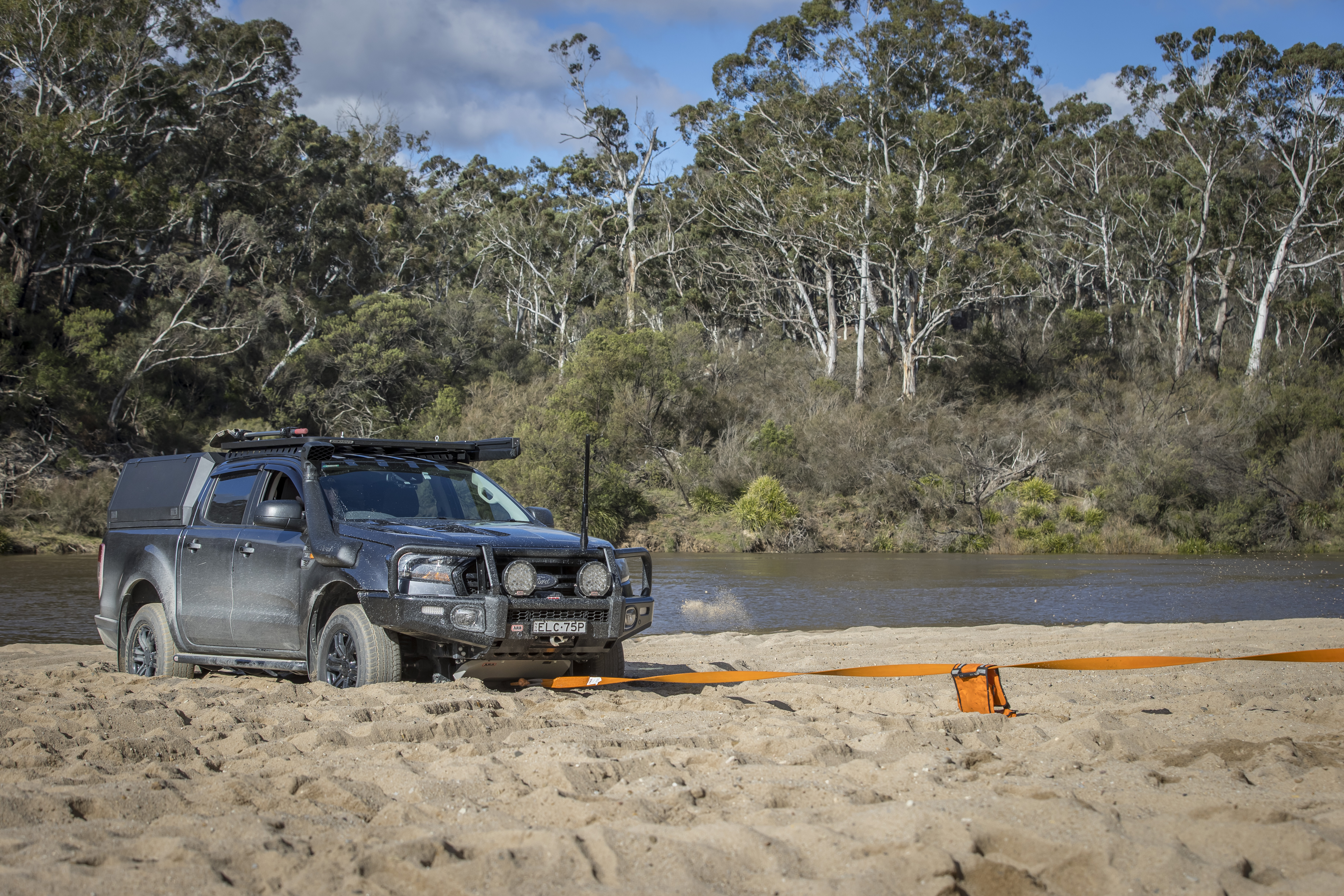
LABELLING LAWS
Vehicle recovery straps must be clearly labelled with the name of the Australian manufacturer, importer, distributor or supplier; the batch code or serial number; the minimum breaking strength, a recommendation that the minimum breaking strength of the strap should be between two and three times the vehicle’s GVM; and advice that the strap must be suited to the GVM of the lighter of the two vehicles used in the recovery process.
In addition, the packaging needs to be clearly marked, and the vehicle recovery strap needs to be supplied with instructions for use.
For full details on labelling, click here.
DO
1. Always check strap for labelling 2. Always check condition of strap 3. Only attach to rated recovery points 4. Use a bridle strap where appropriate 5. Have a clear communication system
DON’T
1. Never attach strap/rope to a tow ball 2. Never join two straps with a steel shackle 3. Don’t step over a tensioned strap/rope 4. Don’t let bystanders near the recovery operation 5. Don’t use worn/damaged straps/ropes or shackles



